9 Reasons we’re nutty about squirrels
by Scott Dutfield · 21/01/2019
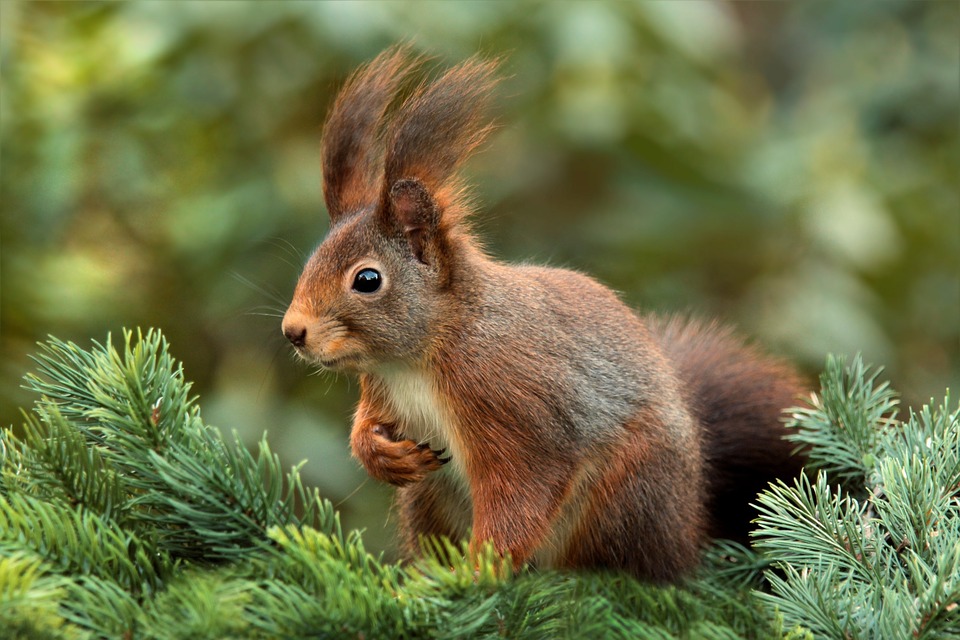
From furry gliding parachutes to cunning fake food burials, squirrels are charismatic and intelligent rodents that are highly adapted to survive in the forest
1. Squirrels are found on every continent except Antarctica and Australia
Squirrels come in a range of shapes and sizes, from the Indian giant squirrel at around a metre (3.3 feet) long and a weight of two kilograms (4.4 pounds), to the tiny African pygmy squirrel, at just ten centimetres (3.9 inches) in length. There are over 200 species of squirrel, and they are found all over the world except for Antarctica and Australia. Yet despite squirrels being prolific across the globe, the UK’s only native species are struggling to survive. With around 120,000 left in the wild in the UK, red squirrels are the sixth most endangered species and their populations have halved in the last 50 years. The main reason for this is the introduction of grey squirrels, who often carry the parapoxvirus, which is fatal to red squirrels. They also tend to eat more green acorns, leaving the red squirrels with limited food supplies. Grey and red squirrels cannot breed and when faced with disease and food shortages, red squirrels produce fewer litters. They often produce an extra litter if they expect a good season, but sadly only 20-50 per cent of these will survive.

2. Flying squirrels can glide over 45 metres (147.6 feet) through the air
Although they cannot fly in the same way as a bird, flying squirrels certainly know how to use gravity to their advantage. They glide from tree to tree, using their tail for stability and balance, and can glide up to 90 metres (295.3 feet) in one flight, although regular jumps are much shorter. They can even obtain lift while gliding and make 180-degree turns in mid-air. Flying squirrels are able to glide due to a furry membrane that stretches from their wrists to their ankles, known as a patagium. This acts as a parachute when their legs are extended, and they can alter their speed and direction by moving their legs and tail. Flying squirrels are similar in size and appearance to other squirrels but have special adaptations for gliding. As well as longer limb bones and shorter foot and hand bones, they have a unique hook shaped wrist bone, known as a styliform cartilage, which is held upwards and supports the membrane. They learn to glide at just five weeks old and leave their nest by ten weeks old.
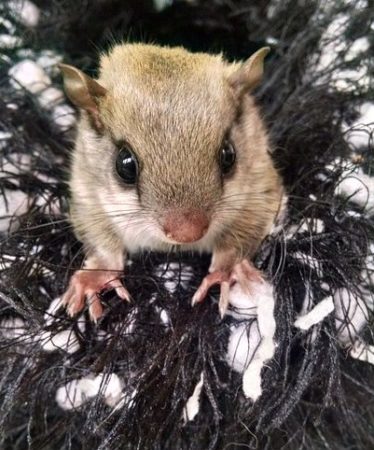
3. A squirrel’s four large front teeth never stop growing
Without a doubt, one of the squirrel’s most important assets are its teeth. Like other rodents, squirrels have four front teeth that keep growing throughout their lifetime, as well as around 16 molars. Their teeth must continually grow as they are constantly being worn down. This is due to the amount of time these rodents spend gnawing on tree bark, nuts and seeds. Baby squirrels, known as kittens, get their lower incisors by four weeks old and their upper incisors by five weeks. They have three pairs of milk teeth and their adult teeth come in by five months old. These adult teeth do not regrow if they are lost or damaged, so protecting them is important for survival. A squirrel’s teeth can easily determine the texture, density, hardness and even temperature of an object. They have a powerful bite that can cut through flesh to the bone, and their large teeth are curved in shape, perfect for cracking open nuts.
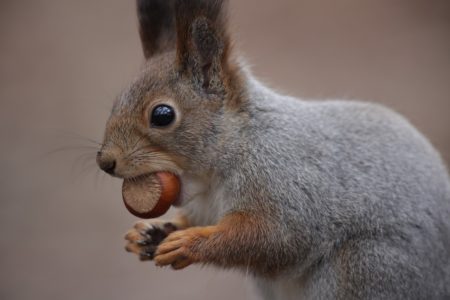
4. They pretend to bury their food to confuse potential thieves
As food is scarce during the winter, squirrels must gather and bury as much as they can to ensure their survival. But keeping an eye on several food caches is difficult and theft is rife in the forest, with 25 per cent of a squirrel’s food cache being stolen. Squirrels are opportunistic with a sensitive nose and can easily sniff out the food caches of other squirrels. It is common for squirrels to spy on others as they bury their food in the hope of stealing their buried treasure when they are not looking. But it’s not just other squirrels that they have to watch out for, as birds like blue jays also steal from their caches. However, these intelligent rodents have developed a cunning way of protecting their food and throwing thieves off the scent. They do this by performing fake food burial displays, known as deceptive caching. The squirrel digs a shallow hole with its paws and frantically fills it in again as it pretends to bury a nut. This distracts the attention of potential thieves, allowing the squirrel to safely deposit its food in the real food cache.
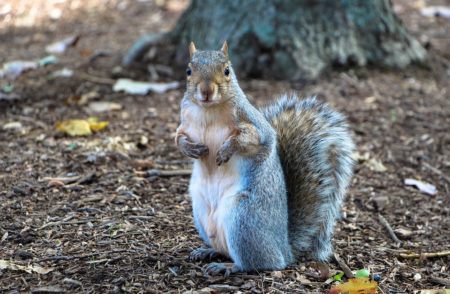
5. They can sprint up a tree vertically and jump three metres (9.8 feet) in a single leap
Squirrels are incredibly agile, and their light body weight and small size make them experts at navigating the forests. They are extremely fast and can sprint vertically up a tree at up to 19 kilometres (11.8 miles) per hour but can reach 32 kilometres (19.9 miles) per hour on flat ground. They have extremely small, sharp claws that can grip onto almost any surface, allowing the squirrels to hang upside down and in the most precarious of places. But it’s their reversible hind paws that make these rodents so versatile – they can twist their feet forwards or backwards, allowing them to grip and run down a tree headfirst as fast as they can run up it. Not only can they run fast, but they also perform aerial acrobatics. Squirrels can jump vertically over 1.5 metres (4.9 feet) and can leap between objects that are over three metres (9.8 feet) apart. That is equivalent to a human leaping over a bus and jumping from a five-story building.
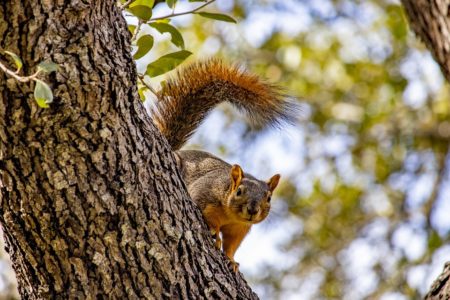
6. Squirrels help to plant new trees
While food caching is one of the squirrel’s top survival tricks, they are not always very good at remembering the precise locations of their many caches. Using multiple caches can protect their food from thieves, but it also means that some of a squirrel’s buried treasure is lost or forgotten and never found. The seeds that the squirrels bury and fail to recover often begin to grow and flourish into new trees. This makes squirrels an essential part of the ecosystem they inhabit, as they help to maintain the forests by unintentionally planting new trees.

7. They can collect 15,000 nuts and sniff out food under 0.3 metres (one foot) of snow
As the autumn leaves fall from the trees, squirrels spend most of their time preparing for winter by foraging for food and burying it. Squirrels do not hibernate, so these supplies must provide enough food to survive winter. They can collect over 15,000 nuts in just one season. During this time the squirrels are preparing the nests and dens that will keep them alive and are eating more than usual. They feast on high-calorie caterpillars, mushrooms and flowers to increase their body fat and create extra insulation. In fact, in the lead up to winter, squirrels can eat their body weight in just one week. Most squirrels stay in the warmth of their nest and will only leave to forage for food, however, red squirrels forage daily in winter. As squirrels lose most of their heat through their ears, red squirrels have developed a clever adaptation to reduce heat loss – growing extra tufts of fur on their ears. Grey squirrels have developed another way of keeping warm by shivering to increase their surface temperature. Squirrels have an excellent sense of smell, which is crucial when the ground is covered in snow. They can sniff out their food cache beneath 0.3 metres (one foot) of snow and reach it by digging a tunnel through the snow.
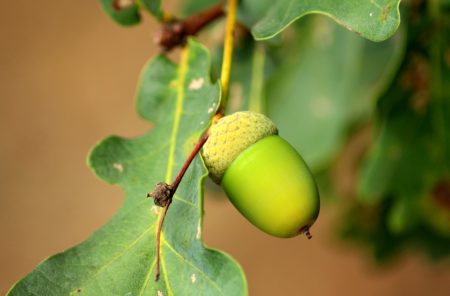
8. They are experts at escaping danger and will zigzag their way to safety if threatened
Highly intelligent and quick on their feet, squirrels are excellent at escaping the clutches of predators. They can sprint at up to 32 kilometres (19.9 miles) per hour and when faced with danger often dart across the forest floor in a zigzag pattern. Not only does this make it difficult for a predator to catch them or predict which way they will go, but it also disguises their intended direction of escape. They have eyes set on the side of their head, allowing them to spot a potential predator attack from any direction. However, when first faced with danger, squirrels oft en stand completely still. When the moment is right, they will quickly run and take cover or will zag-zag their way to a tree trunk and climb to safety. There is one particular tree-dwelling species that makes no attempt to flee. The Indian giant squirrel, one of the largest species of tree squirrel, takes a more unusual approach to escape the clutches of a bird of prey or a jaguar – flattening its body against a tree.
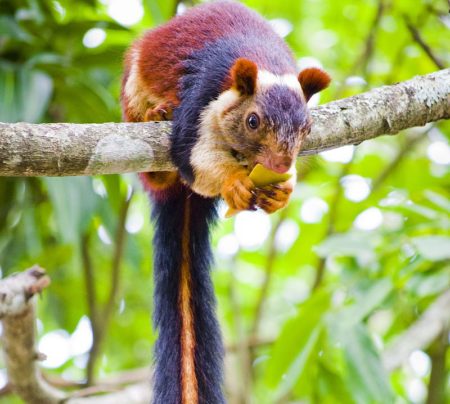
9. Tree squirrels build nests over nine metres (29.5 feet) above the ground
A tree squirrel’s nest, known as a drey, provides shelter during winter. They are always built over six metres (19.7 feet) above the ground, usually in the branch fork of a tree for stability. The drey starts out as a collection of gnawed off branches, which are gathered while the leaves are still green to provide better insulation. When finished, the drey is a dome-shaped nest around 0.3 metres (one foot) across, constructed of loosely woven branches. It is lined with grass, moss, pine needles and shredded bark, although this varies between species. The drey has an entrance at the bottom, close to the trunk to keep the rain out, and a second entrance that is used for quick escapes. Squirrels may build several dreys in a season in case of predators, water leaks, or lice or flea infestations. These nests require constant maintenance and squirrels will use a drey for around two years before abandoning it, although some have been seen in use for over a decade.
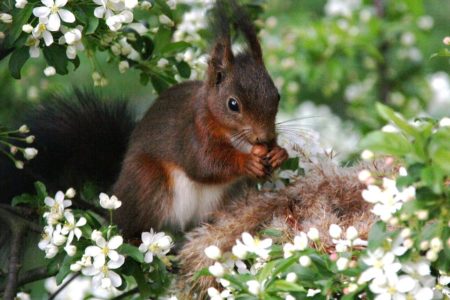
This article was originally published in World of Animals issue 64, written by Amelia Jones
For more science and technology articles, pick up the latest copy of How It Works from all good retailers or from our website now. If you have a tablet or smartphone, you can also download the digital version onto your iOS or Android device. To make sure you never miss an issue of How It Works magazine, subscribe today!




